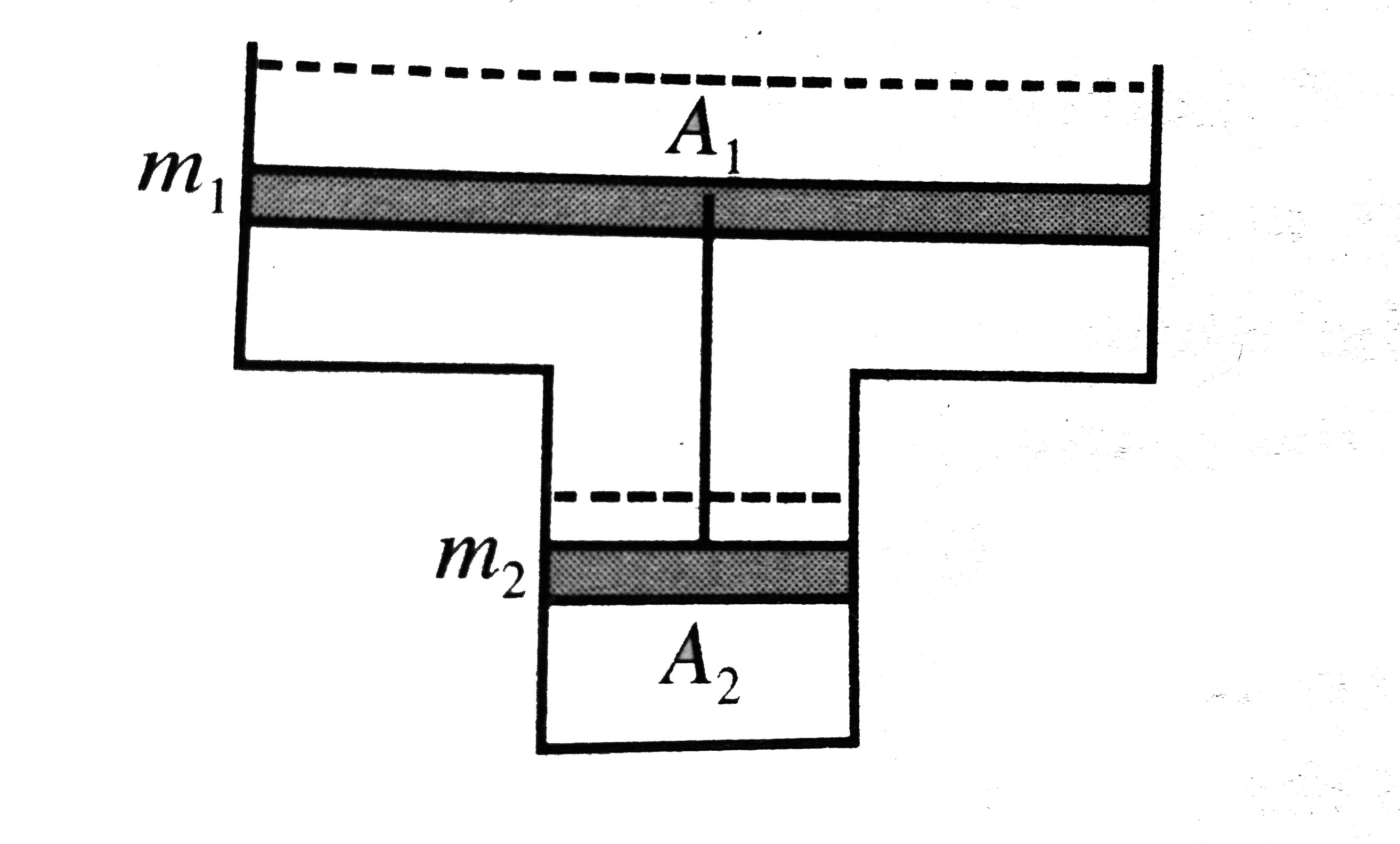An ideal gas in a cylinder is separated by a piston in such a way the entropy of one part is S1 and that of the other part is S2. Given that S1>S2. If the piston is removed then the total entropy of the system will be:
S1+S2
S1×S2
S1−S2
S1S2
To solve the problem, we need to analyze the situation involving the ideal gas in the cylinder and the concept of entropy.
1. Understanding the System: We have a cylinder divided by a piston into two parts. The left part has an entropy S1 and the right part has an entropy S2. It is given that S1>S2.
2. Removing the Piston: When the piston is removed, the two parts of the gas will mix. This mixing of gases will lead to an increase in the total entropy of the system.
3. Entropy as an Extensive Property: Entropy is an extensive property, which means it is additive. The total entropy of a system is the sum of the entropies of its parts.
4. Calculating Total Entropy: After the piston is removed, the total entropy Stotal of the system can be calculated as:
Stotal=S1+S2
5. Conclusion: Since S1 is greater than S2, the total entropy after mixing will be greater than either S1 or S2 alone. Therefore, the total entropy of the system after the piston is removed is S1+S2.
Final Answer:
The total entropy of the system after the piston is removed will be S1+S2.
---
Stotal=S1+S2
The total entropy of the system after the piston is removed will be S1+S2.
Similar Questions
An ideal gas is taken in a container which is divided into 2 parts by a partition. Entropy of the parts is S1&S2 . What will be entropy if partition is removed?
View SolutionA vertical cylinder of cross-sectional area 0.1m2 closed at both ends is fitted with a frictionless piston of mass M dividing the cylinder into two parts. Each part contains one mole of an ideal gas in equilibrium at 300K. The volume of the upper part is 0.1m3 and that of lower part is 0.05m3 .What force must be applied to the piston so that the volumes of the two parts remain unchanged when the temperature is increased to 500K?
View Solution
Knowledge Check
Which of the following part is 1 s of 1 h?
A0.00028 hB0.0827 hC0.0027 hD0.0072 hA vertical closed cylinder is separated into two parts by a frictionless piston of mass m and of negligible thickness. The piston is free to move along the length of the cylinder. The length of the cylinder above the piston is l1, and that below the piston is l2, such that l1>l2. Each part of the cylinder contains n moles of an ideal gas at equal temeprature T. If the pistion is stationary, its mass, m, will be given by : (R is universal gas constant and g is the acceleration due to gravitey)
ARTng[l1−3l2l1l2]BRTg[2l1+l2l1l2]CnRTg[1l2+1l1]DnRTg[l1−l2l1l2]A vertical closed cylinder is separated into two parts by a frictionless piston of mass m and of negligible thickness. The piston is free to move along the length of the cylinder. The length of the cylinder above the piston is l1, and that below the piston is l2, such that l1>l2. Each part of the cylinder contains n moles of an ideal gas at equal temeprature T. If the pistion is stationary, its mass, m, will be given by : (R is universal gas constant and g is the acceleration due to gravitey)
ARTng[l1−3l2l1l2]BRTg[2l1+l2l1l2]CnRTg[1l2+1l1]DnRTg[l1−l2l1l2]
A piston divides a closed gas cylinder into two parts. Initially the piston is kept pressed such that one part has a pressure P and volume 5V and the other part has pressure 8P and volume V, the piston is now left free. Find the new pressure and volume for the isothermal and aidabatic process. (γ=1.5)
View SolutionA mass less piston divides a thermally insulated cylinder into two parts having volumes V = 2.5 litre and 3 V = 7.5 litre. 0.1 mole of an ideal gas is confined into the part with volume V at a pressure of P=105N/m2. The other part of the cylinder is empty. The piston is now released and the gas expands to occupy the entire volume of the cylinder. Now the piston is pressed back to its initial position. Find final temperature of the gas.
[Take R=253Jmol−1K−1 and γ=1.5 for the gas]
View SolutionA masslesss piston divides a closed thermallyy insulated cylinder into two equal parts. One part contains M = 28 g of nitrogen. At this temperature, one-third of molecules are dissociated into atoms and the other part is evacuated. The piston is released and the gas fills the whole volume of the cylinder at temperature T0. Then, the piston is slowly displaced back to its initial position. calculate the increases in internal energy of the gas. Neglect further dissociation of molecules during, the motion of the piston.
View SolutionA closed gas cylinder is divided into two parts by a piston held tight. The pressure and volume of gas in two parts respectively are (P, 5V) and (10P, V). If now the piston is left free and the system undergoes isothermal process, then the volumes of the gas in two parts respectively are
View SolutionConsider a vertical tube open at both ends. The tube consistss of two parts, each of different cross sections and each part having a piston which can move smoothly in respective tubes. The two piston which can move smoothly in respective tube wire. The piston are joined together by an inextensible wire. The combined mass of the two piston is 5kgand area of cross section of the upper piston is 10cm2 greater than that of the lower piston. Amount of gas enclosed by the pistons is 1mol. When the gas is heated slowly, pistons move by 50cm. Find the rise in the temperature of the gas in the form X/RK, where R is universal gas constant. Use g=10m/s2 and outside pressure =105N/m2).

View Solution